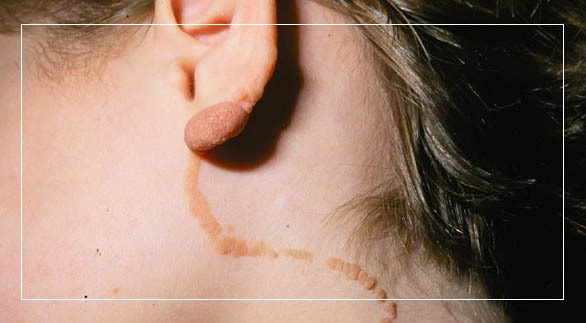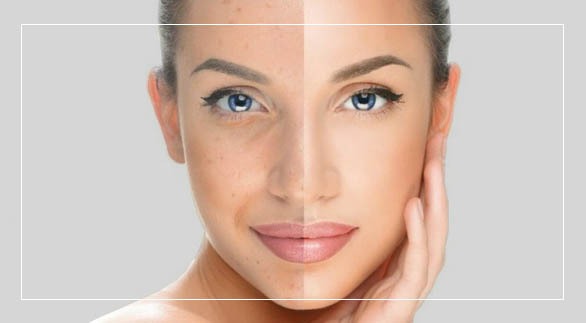
Skin Hyperpigmentation by Dr. ManishaBindal, Sr. Dermatologist at Bindal Clinics, Meerut
Types, causes, and prevention from Skin Hyperpigmentation
Hyperpigmentation is not a necessary condition, but it is a term that describes skin darkening. These are the following signs of pigmentation:
- In small patch
- Covers a large area
- To affect the whole body
While increased pigmentation is usually harmless, it can be a symptom of other medical conditions. Hyperpigmentation, knowing about the cause and how to treat it.
Kind of Hyperpigmentation
Many types of Hyperpigmentation, including common Melsma, Sunspots, and post-inflammatory Hyperpigmentation.
Melasma. Melasma is assumed to be caused by hormonal changes in the body and can develop during pregnancy. Hyperpigmentation can provide emergent areas in each area of the body, but they appear on the abdomen and face.
Sunspots. These are also called liver spots or solar lentigines, and sunspots are common. They have associated with exposure to sunlight over time. Generally, they appear as spots on sun contact areas such as hands and face.
Post-inflammatory Hyperpigmentation.
It may be due to an injury or inflammation of the skin. It is a common cause of acne.
What are the symptoms and risk factors?
Skin darkening, the main symptom is Hyperpigmentation. Patches can vary in size, and the body can develop anywhere.Sun and swollen Hyperpigmentation are the biggest risk factors for general exposure, as both increase the production of melanin in the same condition. The higher the risk of sunlight, the increased the risk of pigmentation of your skin will greatly increase.
Depending on the type of disorder, other types of risk factors for Hyperpigmented patches may include:
- The use of oral contraceptives or pregnancy, as seen with Melasma.
- Darker skin types are more prone to changes in pigmentation.
- Drugs that increase their sensitivity to the sun.
- Trauma for the skin, such as wounds or superficial burns.
What causes Hyperpigmentation?
Hyperpigmentation is a common cause of excess production of melanin. Skin cells called Melanosaits produce it. Some many different conditions or factors can change the production of melanin in your body.
· A few drugs can cause Hyperpigmentation. Additionally, some chemotherapy medications can cause Hyperpigmentation as a reaction.
· Majorly pregnancy can affect different levels of hormones and the production of melanin in some women.
· Addison's disease is a rare endocrine disease known in Hyperpigmentation that can produce sun-exposed areas such as the face, neck, and hands, and the most obvious abrasive contact areas, such as the elbows and knees. Are.
· Hyperpigmentation is a direct result of increased levels of hormones in your body so that the synthesis of melanin increased.
- Excessive sunlight may also cause an increase in melanin.
How is Hyperpigmentation diagnosed and treated?
A dermatologist can diagnose the cause of his Hyperpigmentation. They will have a physical examination to ask their medical history and to determine why. In some cases, a skin biopsy speed may reduce.
Prescription topical can cure some cases Hyperpigmentation. These drugs are usually Haidrokvinon, which brightens the skin.
However, sometimes, Hydrogen use (use without breakdown) can cause declining blacks, known as Okronosis, over a long period of time. So that only the best is to use topical Haidrokvinon under the supervision of a dermatologist so that they can guide you correctly on how to use the drug without any side effects.
- You are using topical retinoids for light skin dark patches.
- Both drugs can lighten dark areas for several months.
- Home care, including medications, can sometimes lighten dark spots that are over-the-counter. This drug is no more Haidrokvinon as prescription medicine.
- Home care also involves using sunscreen. Improvement in most Hyperpigmentation cause sunscreen is the most important factor. The following are some hints:
- Sunscreen with zinc oxide as the main preferably physical blocking active ingredient
- SPF 30 to 50 at least
- Broad-spectrum coverage
- In the daily use of sunscreen. If you reapply in the sun every two hours - if you sweat or swim more often.
- Hyperpigmentation may also play a role in the removal of visible light, with a skin disorder such as Melasma.
- In this case, you can sunscreen mineral iron oxide, which should be visible for blocks containing some visible light. Everyday use. Wear sun-protective clothing infected with SPF.
- Online shop for infected SPF clothing.
- Doctors may also recommend laser treatments or chemical peels to reduce Hyperpigmentation, depending on the cause of your Hyperpigmentation.
Hyperpigmentation is how to prevent it?
Stopping Hyperpigmentation is not always possible. However, if you can protect yourself:
- Wearing a hat or clothes that protect from the sun
- Avoid the sun during the day when it is strongest, which is usually 10: 00-16: 00.
- Some medications can stop Hyperpigmentation.
What is the Hyperpigmentation approach?
Hyperpigmentation is usually harmless and generally not a sign of a serious medical condition.
In some cases, dark areas will fade with good sun protection. In other cases, more intense treatment is required. There is no guarantee that the dark spot will be completely wiped out with treatment.
Summary
Hyperpigmentation is a common skin disorder that can affect many people for many reasons. Types of Hyperpigmentation, including age spots, Melasma, and post-fiery Hyperpigmentation.
Hyperpigmentation is an innocuous skin condition that individuals can dispose of by utilizing evacuation methods, for example, restorative medications, creams, and home cures. In the event that any other individual with Hyperpigmentation notice side effects, they ought to counsel their primary care physician.
If someone wants to treat Hyperpigmentation cosmetic causes, then they will be competent skin experts who can consult them on the best available treatment methods. Hyperpigmentation will be able to identify people, and you can see a doctor, type, and reason. To diagnose a doctor may take a small sample of skin, or biopsy, to determine the cause of Hyperpigmentation.
Doctors usually see skin Hyperpigmentation can diagnose Melasma and other types. They can sometimes always use a special light called skin wood to check the skin. For more dermatology information stay tuned with us and follow Dr. ManishaBindal, Sr. Dermatologist at Bindal Clinics, Meerut.

Pigmented skin lesions refer to lesions that are brown, black or blue in colour, or may be confused with brown or black lesions (for example, vascular lesions, which sometimes look black with the naked eye but under dermatoscopy appear red, purple or blue). The colour of pigmented skin lesions is due to:
- Melanin
- Blood
- Exogenous pigment (for example, tattoo)
Laser therapy for pigmented lesions has been studied over the past two decades. The ability to effectively and safely treat this condition has been a result of these studies and the improvements made in light-based technologies. And now this therapy is available in your own city at Bindals Clinic done by having years of experience dermatologist, Dr. Manisha Bindal

Pigmentation means coloring. Skin pigmentation disorders affect the color of your skin. Your skin gets its color from a pigment called melanin. Special cells in the skin make melanin. When these cells become damaged or unhealthy, it affects melanin production. Pigmentation, better known as hyper pigmentation, is a condition that darkens patches of your skin. These patches can be large or small. While the condition isn't harmful, it can be a symptom of an underlying medical issue and can cause your skin to look uneven and unhealthy.
Hyperpigmentation occurs most commonly on areas of the face including the forehead, cheeks, upper lip and chin. Typically after the age of 30, hyper pigmentation becomes more visible on areas of the body in the form of age spots. Often the result of overexposure to the sun's harmful ultraviolet rays, hyperpigmentation has no other symptoms but is often the cause of cosmetic anxiety.
Laser treatment is one of the most advanced treatments for removing unwanted pigmentation on the skin such as age spots, sun spots, and freckles. At Bindals Clinic we provide you most effective treatments to get rid o your pigmentation and give you a clear, glowing and healthy skin.
